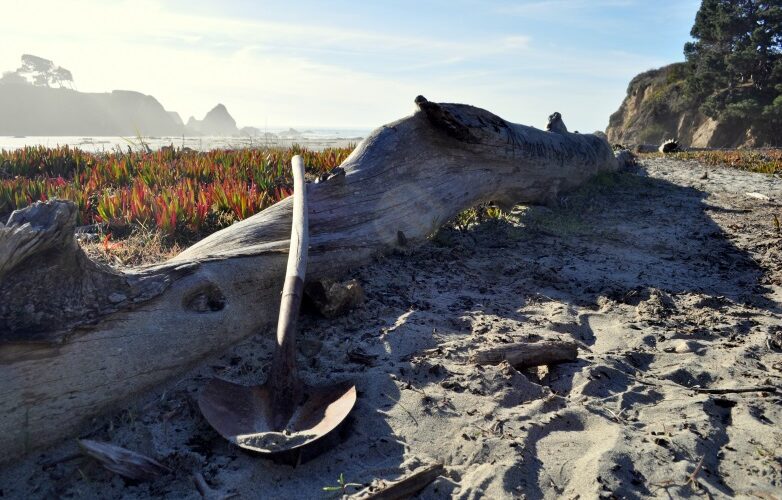Time: 10:00 a.m. to noon
Where: Hare Creek Beach
Park at the Mendocino College Coast Center
What to bring / wear: Dress to get dirty. Bring gloves and water. Tools will be provided.
Hare Creek Beach is owned and managed by Mendocino Land Trust. We rely on volunteer stewardship workdays to maintain our network of public access trails and beaches. Volunteers spend the day pulling invasive plant species, picking up garbage, maintaining the trail, and taking in the beautiful scenery. Stewardship workdays are generally scheduled for the second Saturday of the month and are open to all ages and experience levels.
If you’d like to be on our volunteer email list, send a note to info@mendocinolandtrust.org or use the form at the bottom of our volunteer page.
Here’s a rundown on some of the invasive species we’ll be attacking! (Information courtesy Lenny Noack),
___________________________________
List of, and info on, invasive plants at Hare Creek. NOT an all-inclusive list! Will add to this list as I can.
Data collected from Wiki, other online, book, and human sources (corrections, additions WELCOME).
“Invasive species” is an introduced plant that negatively alters its new environment, causing environmental damage.
“Noxious weed” is an agricultural classification given to plants that are injurious to natural habitats, ecosystems, or horticultural crops.
__________
ENGLISH IVY (Hedera helix)
ATLANTIC or IRISH IVY (Hedera hibernica) aka English Ivy
Native to Europe, western Asia
Invasive species. Classified noxious in Oregon & Washington..
Impact – Aggressively competes with native vegetation, choking it out and completely taking over Climbs trees and can fully engulf and kill them
HIMALAYAN BLACKBERRY (Rubus armeniacus) aka ARMENIAN BLACKBERRY
Native to Armenia, Northern Iran (has no connection to the Himalayan region)
Invasive species. Noxious weed.
Impact – Competes with native vegetation (big bully!), often crushing or smothering it Dense thickets impede native wildlife movement and their access to water
ICE PLANT (carpobrotus edulis), the type carpeting coastal Calif and the Channel Islands
Native to South Africa
Invasive species.
Impact – Aggressively competes with native vegetation, choking it out and completely taking over. Contributes to soil erosion. Alters the soil composition.
SCOTCH BROOM (Cytisus scoparius)
Native to Western and Central Europe, North Africa
Invasive species. Noxious weed.
Impact – Competes with native vegetation, especially in disturbed ground (roadways, cut forests), where it overtakes seedling. Fire hazard
TANSY RAGWORT (Jacobae vulgaris, Asteraceae family)
Native to Northern Eurasia
Invasive species. Noxious weed.
Impact – Can be toxic to horses and cattle. The pollen collected by bees turns the honey bitter. Looks so innocent and pretty when you see a few, but before long, it is all you will see as it out-competes the native flora.
Notes – Pull root & all, bag it up, and put in the garbage, NOT the compost. The prolific seeds aren’t destroyed in compost, and can last for decades.
WILD RADISH (Raphanus raphanistrum)
Native to Western Asia, Europe, North Africa
I do not find this plant to be “officially classified” as either Invasive or Noxious. Nonetheless, it IS a non-native invasive. It is also known to be a medicinal and edible herb, and anyone who wants to harvest it at Hare Creek (especially ALL of it) is most welcome to do so!
Impact – Beauty of its flowers aside, it competes with native vegetation


